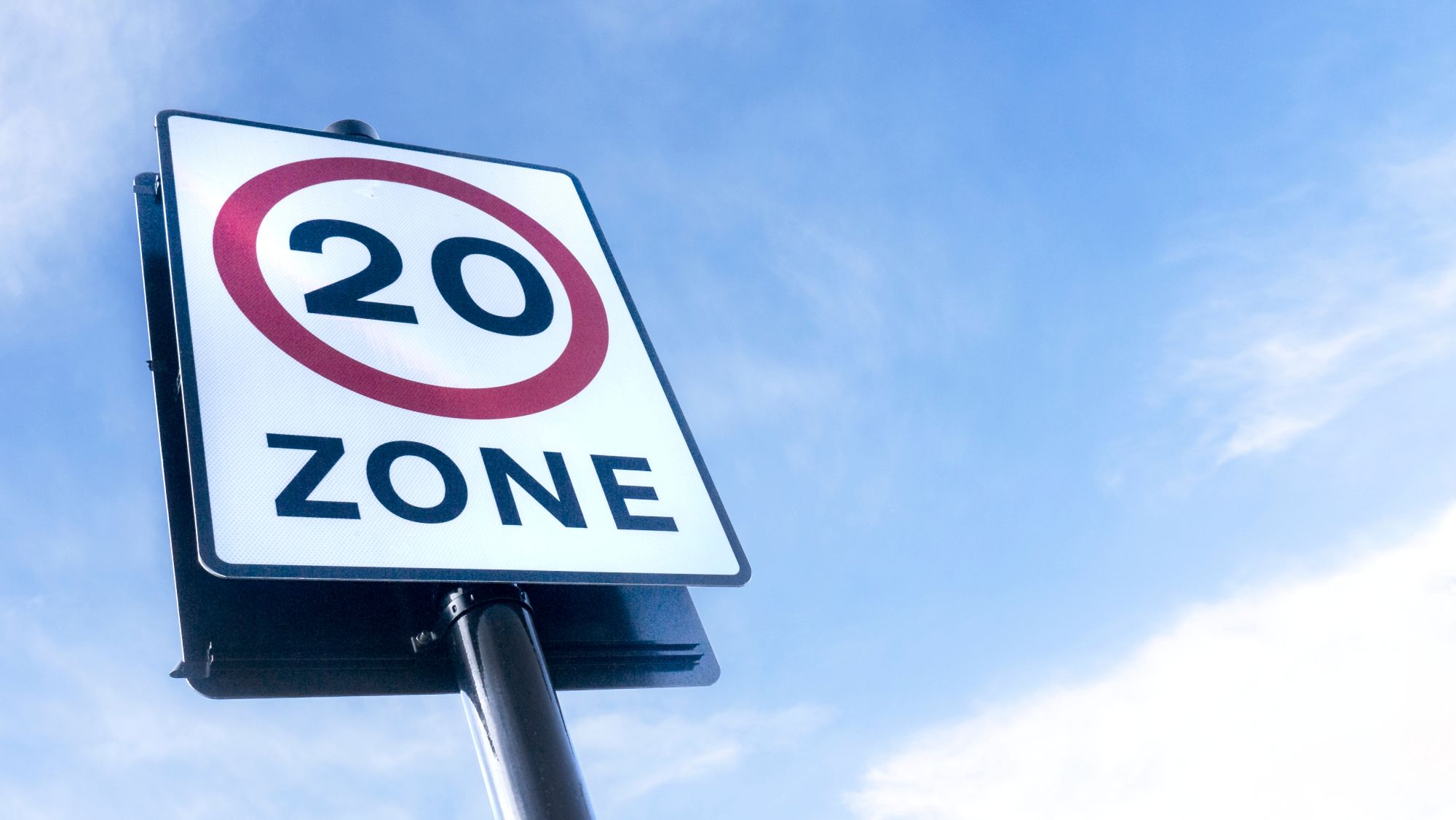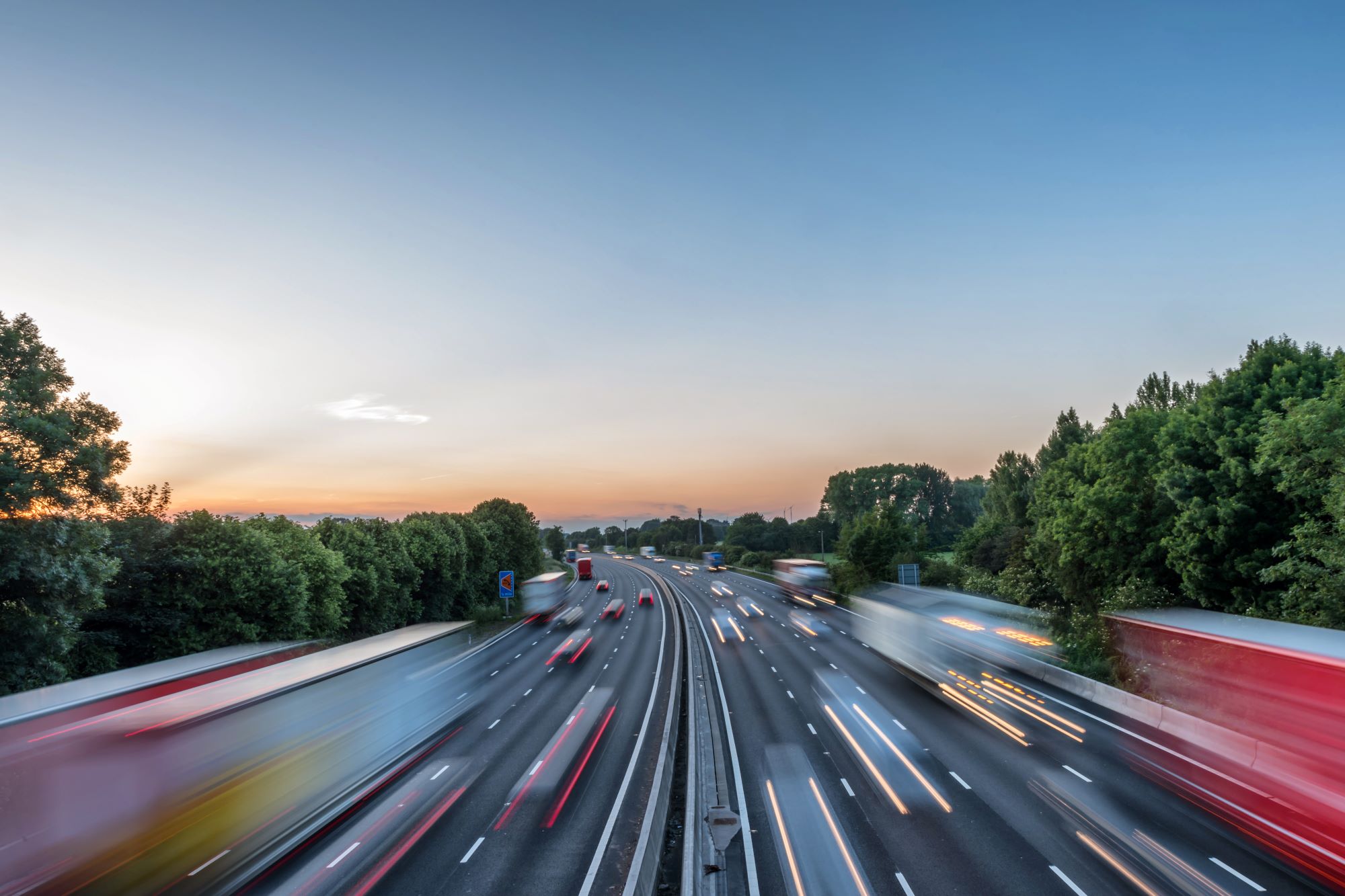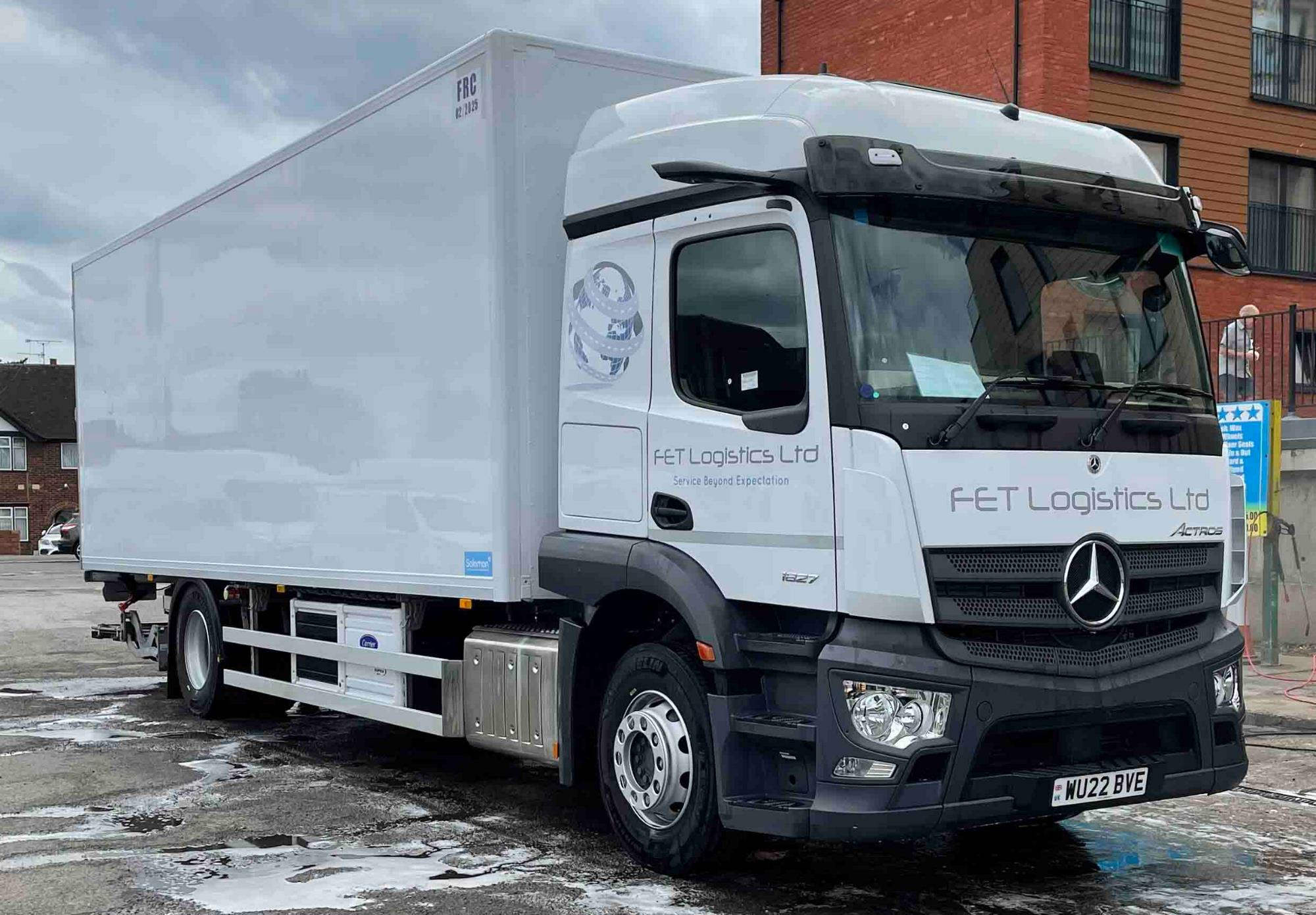
Susie Jones
Milyen következményekkel járnak a 20 mérföld/órás sebességkorlátozások a flották számára?
Létrehozva: 16. 04. 2025
•
Frissítve: 16. 04. 2025
2023-ban 188 nehéz tehergépjárművek vettek részt halálos kimenetelű ütközésekben, ami csökkenést jelent 2022-hez képest, de mégis aggasztó adat. Ezek a balesetek számos tényező, például a járművezető fáradtsága, a jármű rossz karbantartása, az időjárási körülmények vagy más úthasználók cselekedetei miatt következhettek be. A közúti biztonsággal foglalkozó Brake jótékonysági szervezet adatai azonban arra utalnak, hogy a közúti balesetekkel kapcsolatos halálesetek 58%-ánál a sebességet jelentették közúti biztonsági tényezőként. Ebben a blogban azt vizsgáljuk meg, hogy a 20 mérföld/órás sebességkorlátozás bevezetése hogyan befolyásolhatja a flotta működését és csökkentheti a halálos balesetek számát.
Hol történnek a nehéz tehergépjármű-balesetek?
Az [EROS] (https://www.insurancerevolution.co.uk/blog/hgv-driving-safety-statistics/) szerint a nehéz tehergépjárművek ütközéseinek mindössze 10%-a történt autópályán - a többi 90% valószínűbb, hogy városi vagy vidéki úton történt. A vidéki utakon a tehergépkocsivezetők szűk helyekkel, éles kanyarokkal és a veszélyeztetett úthasználókkal, például kerékpárosokkal és gyalogosokkal való interakcióval szembesülnek, ami növeli a balesetek valószínűségét. A városi területek nagyobb kockázatot jelentenek a tehergépkocsivezetők számára a nagyobb sűrűségű forgalom, a gyakori megállások, a gyalogosok tevékenysége és az összetett útfelépítés miatt - a városi utak kiszámíthatatlanságával együtt nagyobb veszélyt jelentenek a tehergépkocsivezetők számára.
A 20 mérföld/órás zónák hatása.
A [walesi kormány] (https://motortransport.co.uk/industry-news/fleetcheck-urges-operators-to-back-calls-for-wider-use-of-20mph-speed-limits/25490.article) által közzétett adatok szerint 2024-ben 100-zal kevesebb baleset történt a városi utakon, mint 2023-ban ugyanebben az időszakban, mielőtt a 20 mérföld/órás sebességkorlátozást bevezették volna a városi területeken.
A programot olyan szervezetek támogatják, mint a Brake és a Cycling UK, és most a flottakezeléssel foglalkozó szakemberek [FleetCheck] (https://motortransport.co.uk/industry-news/fleetcheck-urges-operators-to-back-calls-for-wider-use-of-20mph-speed-limits/25490.article) arra ösztönzik a fuvarozó cégeket, hogy álljanak a program mögé. Azzal érvelnek, hogy a 30 km/h-ról 20 km/h-ra való áttérés minimális hatással lesz a flotta hatékonyságára, és határozottan megerősítik azt az elképzelést, hogy ez évente életeket mentene meg.

Mit gondolnak a flották és a járművezetők a 20 mérföld/órás sebességkorlátozásról?
A FleetCheck szerint a fuvarozók vegyes érzelmeket tápláltak a kezdeményezéssel kapcsolatban. Néhányan a hatékonyságot hátráltatónak tekintették a változásokat - azzal érvelve, hogy az alacsonyabb sebességkorlátozások arra kényszeríthetnek egyes flottákat, hogy csökkentsék az adott időszakban elvégezhető szállítások számát.
A SNAP közösségi médiaoldalain a járművezetők határozott véleményt fogalmaztak meg a javaslattal kapcsolatban. Az egyik járművezető így kommentálta:
"Ki fogja támogatni a több 20 mérföld/órás zónát? Az egész vezetési színvonal a probléma. Amióta kijöttünk a zárlatból, a vezetési színvonal ördögi, beleértve a személygépkocsikat, a furgonokat és a teherautókat is."
A közösségi oldalakon nem változott a hangulat, sokan nem támogatták a változtatást.
A több 20 mérföld/órás zóna előnyei.
A csökkentett sebességű zónák számos előnnyel járnak a tehergépkocsi-vezetők számára.
Az alacsonyabb sebesség javítja a reakcióidőt és csökkenti a féktávolságot, így könnyebben elkerülhetők az ütközések - különösen városi területeken.
A tehergépjárművek valószínűleg kevésbé kopnak el a csökkentett sebességkorlátozás mellett.
Az akadályok, amelyekkel a flottatársaságok szembesülhetnek.
Mint említettük, egyes flottatársaságok aggódnak amiatt, hogy az alacsonyabb sebességkorlátozások csökkenthetik az adott időszakban teljesíthető szállítások számát. A flottatársaságok a következő kihívásokkal is szembesülhetnek:
Hosszabb menetidő: az időérzékeny szállításokat érinti, hatással van a menetrendre és az ügyfelek elvárásaira.
Útvonaltervezés: A vállalatoknak esetleg módosítaniuk kell az útvonalakat a lassabb sebességek figyelembevételével.
Megfelelés: A járművezetők további képzésébe való befektetés az új sebességkorlátozások betartásának biztosítása érdekében kulcsfontosságú lesz.
Bár ezek a problémák további kihívásokat jelenthetnek a flottatársaságok számára, sok közülük proaktívan kezelhető. Sokan azt állítják, hogy a hosszú távú biztonsági előnyök felülmúlják az akadályokat.

A számok magukért beszélnek.
A [Veszélyes autópályák] (https://snapacc.com/hazardous-highways/) elnevezésű kampányban a SNAP azonosította a legveszélyesebb GB-helyszíneket. Mélyebbre ásunk, hogy kiderítsük, mely utakra lenne jó hatással a sebességkorlátozás csökkentése.
A SNAP megállapította, hogy a délkeleti országrészben vannak a legveszélyesebb utak. Kentben vannak a legveszélyesebb utak Nagy-Britanniában, és [azt javasolja, hogy 2050-re a kenti autópálya-hálózaton nulla halálos áldozatot követelő közúti baleset legyen a cél] (https://www.kent.gov.uk/roads-and-travel/road-safety/vision-zero-road-safety-strategy?utm_source=chatgpt.com). Mely utak a legaggasztóbbak?
A254-es út: Egy rövid, mindössze négy mérföld hosszú út, de 2018-ban Nagy-Britannia legveszélyesebb útvonalának választották. A jelentés az A254-es útnak az A28-as autópálya margate-i csomópontja és az A255-ös autópálya Ramsgate melletti csomópontja közötti szakaszát emelte ki. Ezen a szakaszon a sebességkorlátozás 30 és 40 mérföld/óra között változik - a beépített területek és a doveri kikötőből érkező nagy forgalom különösen veszélyessé teszik ezt az utat a kerékpárosok, a gyalogosok és más közlekedők számára. Jót tenne-e ennek az útszakasznak a lassabb sebességkorlátozás?
A252-es út: Az A252-es út 8,7 mérföld hosszú, és a balesetek magas száma miatt hírhedt. 2020-ban megkezdődtek a munkálatok a balesetek számának és súlyosságának csökkentése érdekében, a változások között szerepel, hogy ezen a szakaszon a sebességet 60-ról 50 mérföld/órás sebességre csökkentik, kivéve ott, ahol alacsonyabb sebességkorlátozás van érvényben. Elég ez azonban ahhoz, hogy lerázza magáról az út Nagy-Britannia egyik legrosszabb útjának hírnevét?
Surrey és Essex szintén a lista élén állt, és az elmúlt öt évben összesen [30 378] (https://www.number1plates.com/blog/britains-worst-areas-for-road-accidents/#:~:text=With%2020%2C473%20recorded%20accidents%20from,as%20some%20of%20the%20worst.) balesetet szenvedett. Surrey magas baleseti rátája a lakott városok és a vidéki utak keveredésének tulajdonítható. Londonhoz és a főbb autópályákhoz való közelsége több ütközést eredményezett.
Az M25-ös autópálya: A London Orbital Motorway néven is ismert M25-ös Nagy-Britannia egyik legforgalmasabb útja, egyben Európa második leghosszabb körgyűrűje. 2007 és 2016 között 7673 balesetről és 80 halálos áldozatról számoltak be. Mint létfontosságú autópálya, nevetséges lenne, ha a sebességet csak 20 mérföld/órás sebességgel szabályoznák. Az M25-ösnek azonban hasznára válnának a korlátozott sebességű zónák?
A3: Az A3-as 67 mérföld hosszú, és a nagy forgalom, a sebességkorlátozások és a rossz útviszonyok miatt kihívást jelenthet a vezetés számára.
Gyakran ismételt kérdések
Mi a teherautók maximális sebességhatára?
A tehergépkocsivezetőknek szigorú sebességszabályokat kell betartaniuk. Ezek a korlátozások a teherautók méretének, súlyának és fékezési képességének figyelembevételével vannak érvényben.
Egysávos utak: A 7,5 tonna feletti teherautók maximális sebessége 50 mérföld/óra.
Kétvágányú utak: A 7,5 tonna feletti tehergépkocsik maximális sebességhatára 60 mérföld/óra.
Autópályák: A tehergépkocsi-vezetők nem haladhatják meg a 60 mérföld/órás sebességet autópályán.
Sebességkorlátozó előírások az Egyesült Királyságban Az Egyesült Királyságban minden tehergépkocsiba sebességkorlátozót kell beszerelni, amely korlátozza a jármű által elérhető maximális sebességet.
* Jogszabályi követelmények az Egyesült Királyságban:* Minden 3,5 tonna feletti teherautónál 56 mph-ra kell beállítani a sebességkorlátozót.
Hogyan működnek: A sebességkorlátozók korlátozzák a motorba jutó üzemanyag mennyiségét, amint a jármű elér egy előre beállított sebességet - így biztosítva, hogy a járművezetők ne léphessék túl a sebességhatárt.
Szüksége van-e egy személyautónak sebességkorlátozóra?
Egy magánteherautónak nincs szüksége sebességkorlátozóra, kivéve, ha kereskedelmi célokra használják. A [sebességkorlátozó nyilatkozat nyomtatvány] (https://www.gov.uk/government/publications/hgv-speed-limiter-exemption-declaration-form) kitöltésével kell nyilatkoznia arról, hogy járműve mentesül-e a sebességkorlátozó használata alól, amikor a műszaki vizsgára viszi.



